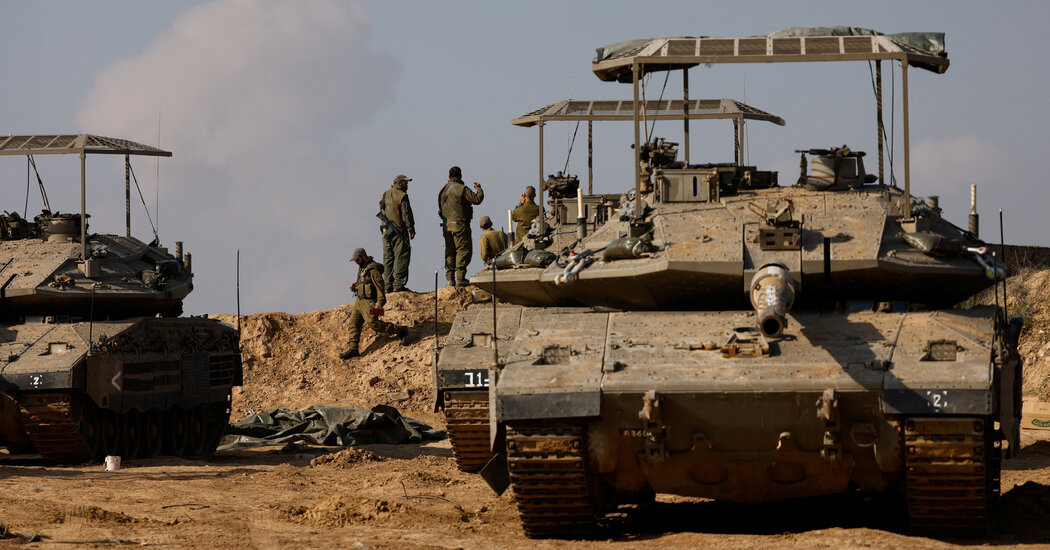[ad_1]
The fragile truce between Israel and Hamas collapsed on Friday morning because the adversaries could not find common ground for further exchanges of hostages and prisoners, according to two Israeli officials involved in the talks.
Publicly, Israel and Hamas blamed each other for military activity that violated the weeklong cease-fire — Israel said Hamas had fired a rocket from Gaza into southern Israel, while Hamas said Israeli troop operations had resumed in northern Gaza. But the two Israeli officials said the real reason the pause ended was a stalemate in prisoner-swap negotiations.
Prime Minister Benjamin Netanyahu of Israel had hoped for at least one more round of exchanges, said these officials, who spoke on condition of anonymity because of the sensitivity of the discussions. But Hamas had begun demanding more Palestinians be released from Israeli jails, including some higher-profile detainees, in exchange for the remaining hostages held in Gaza, who include Israeli soldiers.
Mr. Netanyahu had already been telling his cabinet this week that a return to military operations in Gaza was inevitable, the two officials said. On Thursday, after meeting with Secretary of State Antony J. Blinken, Mr. Netanyahu said: “I have sworn to destroy Hamas. Nothing will stop us.”
Mr. Netanyahu, who leads a largely right-wing coalition of parties, is facing intense pressure from the Israeli public and from his political allies to press on in the war with Hamas. Aides close to the prime minister have said his political future largely depends on his ability to deliver what would be seen as a decisive victory over Hamas.
At the same time, international pressure is mounting on Mr. Netanyahu to end the war, which has deepened a humanitarian crisis and killed more than 13,000 people in Gaza, according to health authorities in the territory.
International negotiators involved in the negotiations for hostage and prisoner swaps had hoped that the longer the quiet between Israel and Gaza lasted, the harder it would be for Israel to restart its military campaign and extend it to southern Gaza, where senior Hamas leaders are believed to be hiding.
The negotiations — which have involved top officials from Qatar, the United States, Egypt and Israel — have focused on a formula in which each hostage held by Hamas was exchanged for roughly three Palestinian prisoners or detainees held by Israel.
During the truce, 105 people taken hostage by Hamas assailants during their Oct. 7 attack on Israel were exchanged for 240 Palestinian women and minors held in Israeli prisons, many of who had not been convicted of crimes. The hostages released by Hamas were largely women and children, who were considered the top priority for release by Israeli negotiators.
A total of roughly 240 people were taken hostage by Hamas, and those remaining in Gaza are largely men between the ages of 18 and 50, said Israeli officials involved in the talks.
For the next round of exchanges, Israeli negotiators have pushed for a broader definition of who qualifies as a civilian, the two Israeli officials said. Hamas, through mediators, has taken the position that most Israeli men over the age of 18 qualify as soldiers, and has demanded a higher price for their exchange, the officials said. Israel has said that male hostages over age 50 should be classified as civilians.
[ad_2]
Source link




